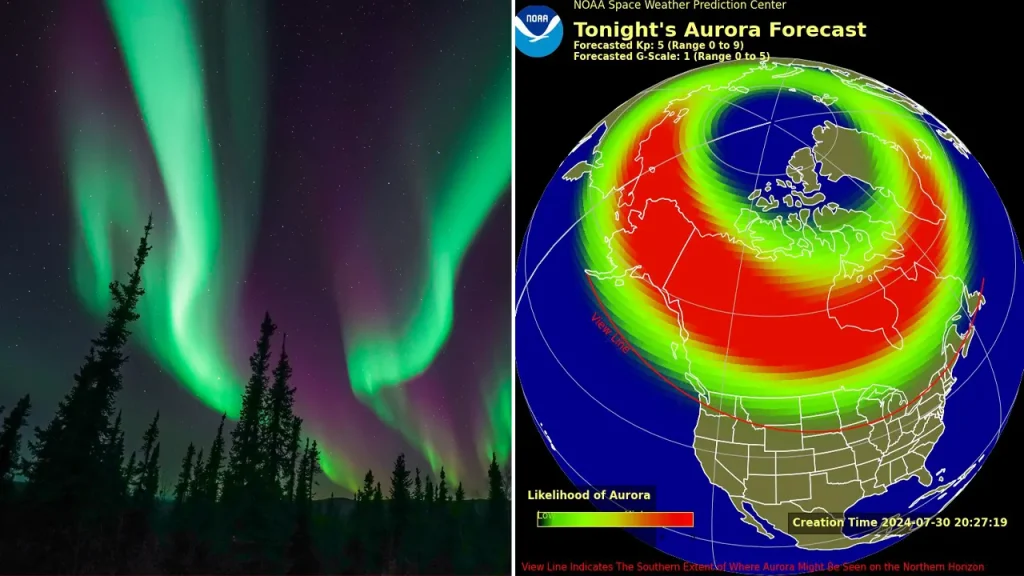Residents in several northern U.S. states may have the opportunity to witness the stunning Northern Lights in the coming week due to a series of recent solar storms. The National Oceanic Atmospheric Association’s (NOAA) Storm Weather Prediction Center (SWPC) announced that several coronal mass ejections (CMEs) were released by the Sun and are on a path toward Earth, with some being determined to have Earth-directed components. As a result, a Geomagnetic Storm Watch has been issued, and the NOAA reported that additional CME arrivals are still a possibility.
Astronomers are closely monitoring the CMEs and offering forecasts for the potential sightings of the Northern Lights in different U.S. states. The NOAA reported that potential G2 (moderate) and G3 (strong) magnetic storm levels may occur, with the most intense solar storms predicted to happen in the early morning hours on Tuesday. This means that people in the upper U.S. states and some parts of the Midwest may have the opportunity to catch a glimpse of the lights. The Aurora Borealis, or Northern Lights, are caused by charged particles from a CME interacting with the Earth’s magnetic field.
The weather also plays a significant role in the visibility of the Northern Lights, with clear skies being essential for optimal viewing conditions. Fox Weather reported that most of Canada and the northern states in the U.S. are expected to have favorable weather for viewing the lights. However, in some areas like the Upper Midwest and Northeast, cloud cover may create fair to poor viewing conditions. Despite potential weather challenges, stargazers in various states will have the opportunity to witness this natural phenomenon if conditions align.
Earlier this summer, the Aurora Borealis was seen across the U.S. and even in some southern states, following the strongest geomagnetic storm in 20 years. While strong solar flares can cause disruptions like high-frequency radio blackouts, the phenomena associated with CMEs, such as the Northern Lights, are admired for their beauty and uniqueness. NASA satellites observed the CME blast away from the Sun and head towards the Earth’s magnetic field. This event allows individuals in certain regions to witness the colorful dancing lights in the night sky.
The SWPC’s website is continuously monitoring the CMEs and issuing updates on the forecast for potential sightings of the Northern Lights. The center noted that some CME arrivals may lead to additional sightings during the week. Fox Weather detailed the predicted timing of the G2 and G3 storm levels and described when residents in different U.S. states might have the opportunity to view the lights. With the excitement surrounding the possibility of witnessing the Northern Lights, many stargazers are eagerly awaiting this natural spectacle in the night sky.
Overall, the recent solar storms and CMEs have created an opportunity for residents in certain northern U.S. states to see the stunning Northern Lights. The possibility of G2 and G3 magnetic storm levels, along with favorable weather conditions in many areas, increases the chances of witnessing this rare and breathtaking natural display. As astronomers continue to monitor the situation and provide updates, stargazers are advised to keep an eye on the forecast and prepare for potential sightings of the Aurora Borealis in the upcoming days.


